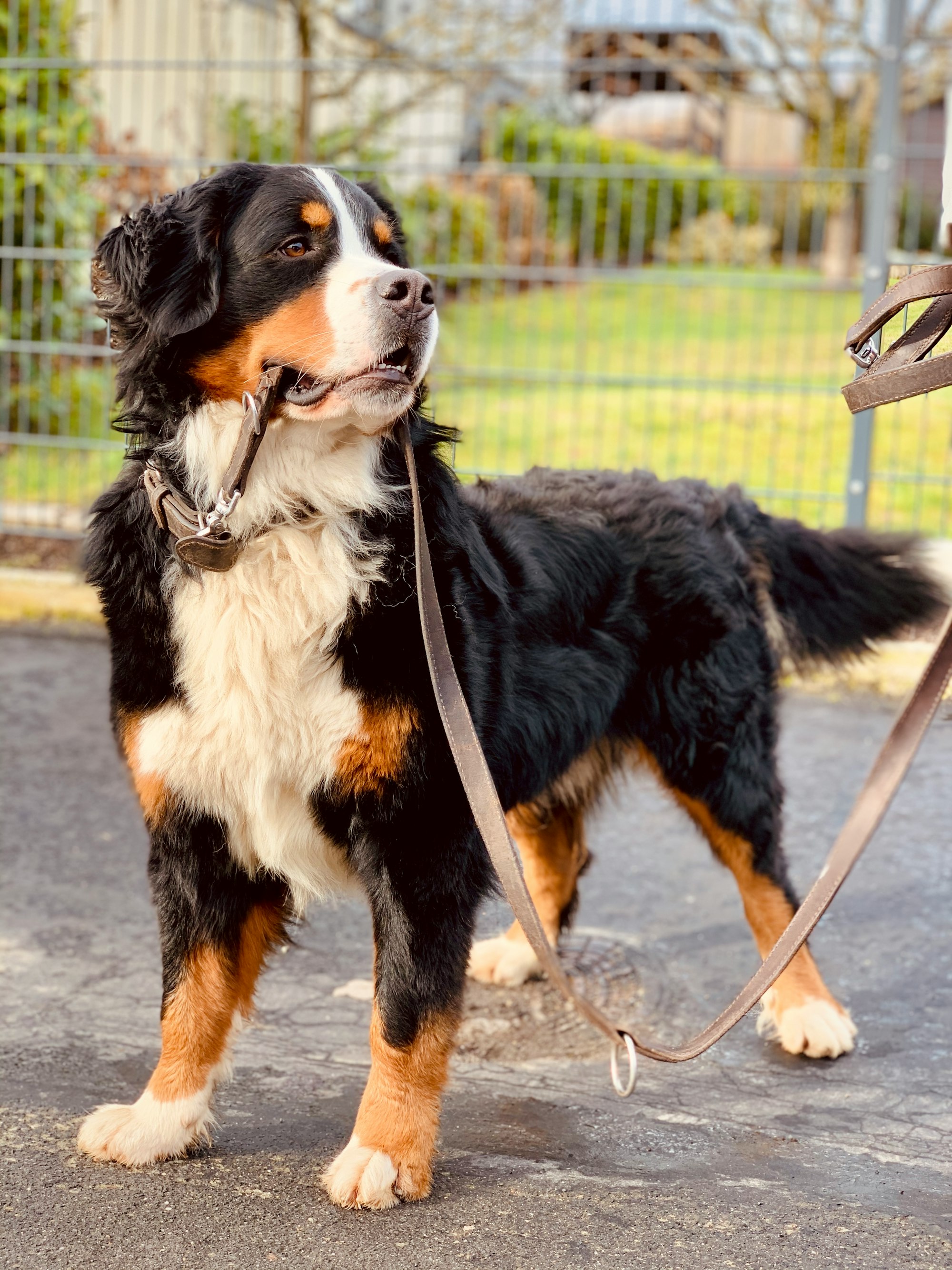As a society, we adore our dogs. These faithful, endearing beings are more than just pets; they're pivotal members of our families, and nothing makes us happier than seeing a happy dog. In our pursuit to ensure their safety and good behavior, we utilize various training methods, tools, and techniques. However, some of these well-meaning endeavors might unintentionally do more harm than good. Among the contentious tools used for dog training is the choke collar.
This article seeks to unveil the hidden reality of these choke collars and aid readers in comprehending the potential risks they carry.
Choke Collars Defined: More Than Meets the Eye
For those unfamiliar with the term, choke collars, also known as choke chains or slip chains, are typically made of metal and are designed to tighten around a dog's neck when the leash is pulled. At first glance, they might seem like an effective tool for maintaining control, particularly with larger, more powerful dogs. But the underlying reality is far more complicated and potentially hazardous.
The Risks and Dangers: Unmasking the Hidden Harm
While choke collars might offer immediate results in terms of controlling a dog's movement, the risks associated with their use are often underplayed or overlooked. To start, the use of choke collars can lead to both physical and psychological harm.
Physical Harm: The Visible and Invisible Wounds
Choke collars can induce physical harm varying from mild to serious in dogs. At the milder end of the spectrum, a dog may encounter discomfort, skin irritation, and disruptions to natural processes like seasonal shedding. However, the gravest concerns are the potentially serious injuries these collars can cause, which include damage to the trachea and esophagus, neck sprains, nerve damage, and in extreme cases, injuries to the spinal cord or even fatality.

Psychological Harm: More Than Skin Deep
Beyond the physical, choke collars can also inflict psychological harm. Dogs might associate the pain and discomfort caused by the collar with whatever they're focused on at that moment, whether it's other dogs, people, or various situations. This can lead to increased fear and aggression, impacting not just their behavior but also their quality of life.
Collarless Training: A Kinder Alternative
Given the potential harm, it's crucial to explore kinder, safer alternatives for training. Collarless training methods, such as positive reinforcement, clicker training, or using a harness instead of a collar, are just a few possibilities.
The Choke Collar Controversy: A Tale of Two Perspectives
The utilization of choke collars, much like various other subjects associated with dog training, including scent work, sparks intense debate. Supporters contend that when used appropriately, choke collars can serve as efficient training tools. They maintain that issues are predominantly a result of misuse rather than the device itself. Conversely, critics argue that the inherent risks and potential damage far surpass any prospective benefits.
The Advocates: From Control to Correction
Proponents of choke collars often focus on their ability to provide control, particularly with larger and more challenging breeds. They argue that a quick tug can correct unwanted behavior and reinforce positive behavior. Some trainers feel that this gives them an effective tool to communicate with the dog, offering clear, immediate feedback.
The Detractors: Pain, Fear, and Potential Harm
Those against choke collars, however, see a different picture. They point out the numerous studies that highlight the potential for serious injury and psychological harm. For these critics, even when used correctly, choke collars rely on negative reinforcement — pain and fear — to train dogs. This approach can erode trust between dogs and their humans, potentially leading to fear-based aggression.
A Closer Look at the Risks: Canine Tracheal Damage
One of the most severe risks of choke collars is damage to the trachea. The trachea, or windpipe, is the tube connecting the nose and mouth to the lungs. It's not a robust structure; it can be easily damaged by pressure.
When a choke collar tightens, it exerts pressure on the trachea, leading to potential injury. Imagine a strong tug on the leash causing a sharp increase in pressure around the neck. The fragile trachea could be bruised or even fractured. Dogs with such injuries often exhibit a harsh, raspy cough and may have difficulty breathing. In severe cases, emergency veterinary care is required.
Looking Beyond the Neck: Spinal Injuries and More
The neck isn't the only body part at risk. Spinal injuries, nerve damage, and eye problems can also result from the use of choke collars. Spinal injuries can occur when a dog lunges on a leash attached to a choke collar, resulting in a sudden jolt. This can cause a range of issues, from minor muscle strains to more severe problems like herniated discs.
Nerve damage can result in various problems, from weakness in the legs to issues with balance. Even a dog's eyes can be affected. Increased pressure in the neck can lead to increased pressure in the eyes, potentially worsening conditions like glaucoma.
From Physical to Psychological: The Hidden Emotional Toll
The effects of choke collars are not limited to physical health. Dogs are emotionally complex creatures, and the use of pain-based training methods can have significant psychological repercussions.
When a dog experiences pain or discomfort from a choke collar, it can create a negative association with whatever the dog was focusing on when the pain occurred. This could be other dogs, people, or specific environments or situations. Over time, these negative associations can lead to increased fear responses and potentially aggression.

A Safer Alternative: Introducing Fi Dog Collars
In the vast world of dog collars, it's easy to become overwhelmed by the plethora of options available. But amidst this wide variety, one collar stands out for its commitment to canine safety and well-being - the Fi Dog Collar.
What is a Fi Dog Collar?
Fi is a technology-oriented company focused on creating products that cater to the well-being of our furry friends. One of their standout products is the Fi Dog Collar, an innovative device that marries functionality and safety with the advantages of modern technology.
Safety Meets Technology: The Fi Dog Collar's Unique Features
Unlike traditional dog collars, the Fi Dog Collar doesn't rely on physical correction methods such as choking or pronging. Instead, it utilizes cutting-edge technology to help you monitor and manage your dog's activities and behavior.
One of its key features is the GPS tracking system. With this technology, you can always know where your dog is, reducing the risk of them getting lost or wandering into dangerous areas. The collar is linked to your smartphone, allowing you to monitor your pet's location in real time.
Another notable feature is the activity tracker. This function monitors your dog's exercise levels, helping you ensure they're getting the right amount of physical activity for their breed, size, and age.

The Humane Approach: Why Fi Dog Collars Don't Pose a Risk
Unlike choke collars, the Fi Dog Collar doesn't present a physical risk to dogs. There's no tightening mechanism that could potentially harm your dog's neck or trachea. The Fi collar simply sits around your dog's neck, much like a regular collar, ensuring comfort and safety.
Psychologically, the Fi collar doesn't rely on fear or pain for behavioral correction. This means there's no risk of creating negative associations that might lead to behavioral problems down the line.
Promoting Better Communication: The Fi Collar's Role
The Fi collar is more than just a safer alternative to choke chains. It can help enhance the communication between you and your pet. By monitoring your dog's activity levels, you can better understand their needs and behavior. And with the GPS tracker, you can provide them with the freedom to explore while ensuring they remain safe.
Frequently Asked Questions
What is a choke collar for dogs?
A choke collar, also known as a choke chain or slip chain, is a type of collar that tightens around a dog's neck when the leash is pulled. It's traditionally used for training purposes, but it has become a subject of debate due to potential risks and harms.
What are the risks associated with choke collars?
Choke collars can cause a range of physical injuries, including skin irritation, tracheal and esophageal damage, neck sprains, nerve damage, and even spinal cord injuries. They can also inflict psychological harm, creating negative associations that can lead to fear and aggression.
Are choke collars effective for dog training?
While some people find choke collars effective for training, they work on the principle of negative reinforcement, causing discomfort or pain to discourage unwanted behavior. This method can lead to physical harm and behavioral issues. Many animal experts recommend more humane training methods that reward good behavior instead.
What are some alternatives to choke collars?
Alternatives to choke collars include harnesses, head collars, and flat collars. Training methods such as positive reinforcement, clicker training, and reward-based training are also safer and often more effective alternatives.
What is a Fi Dog Collar?
A Fi Dog Collar is a modern, tech-friendly alternative to traditional collars. It does not use physical correction methods like choke or prong collars. Instead, it uses GPS technology to keep track of your dog's location and an activity tracker to monitor your dog's exercise levels.
How does a Fi Dog Collar work?
The Fi Dog Collar uses GPS technology that connects to your smartphone, allowing you to monitor your dog's location in real time. It also features an activity tracker that monitors your dog's exercise levels, ensuring they get the right amount of physical activity.
Is the Fi Dog Collar safe for my dog?
Yes, the Fi Dog Collar is designed to be safe and comfortable for dogs. It doesn't tighten around the neck like a choke collar, and it doesn't use pain or fear for behavioral correction. It is designed to enhance communication between you and your dog and promote healthier, safer behaviors.
Conclusion: A New Perspective on Canine Training Tools
As dog lovers, our main goal is to ensure the well-being and happiness of our beloved pets. In the quest for obedience and control, however, traditional training methods like the choke collar have often been employed, leading to a significant concern regarding their safety and effectiveness.
Our exploration into the hidden truth about choke collars has revealed several risks associated with their use. These risks include not only physical injuries such as tracheal damage, neck sprains, nerve damage, and even spinal cord injuries, but also psychological implications that can lead to behavioral problems like fear and aggression.
The controversy surrounding choke collars showcases a broader debate in the field of canine training and care. While some advocates argue that choke collars can be effective when used correctly, it's crucial to consider the adverse effects these tools may have on our pets' physical and mental health.
As we progress towards more humane training practices, it's essential to recognize the available alternatives. Collarless training methods, positive reinforcement, and the use of safer, more comfortable collars are all valid, effective options. In particular, the Fi Dog Collar stands out as an innovative solution that combines safety, comfort, and technology.
The Fi Dog Collar does away with pain and fear-based correction methods and instead employs modern technology to help us better understand and care for our dogs. Its GPS tracking and activity monitoring capabilities provide not just a safer alternative to traditional collars but also a way to improve our relationship with our pets.
In essence, understanding the risks of choke collars for dogs is just the beginning. It's about a broader movement towards kinder, safer, and more effective methods of training and caring for our dogs. As the debate continues, one thing remains clear: our dogs' health and happiness should always be our top priority.






